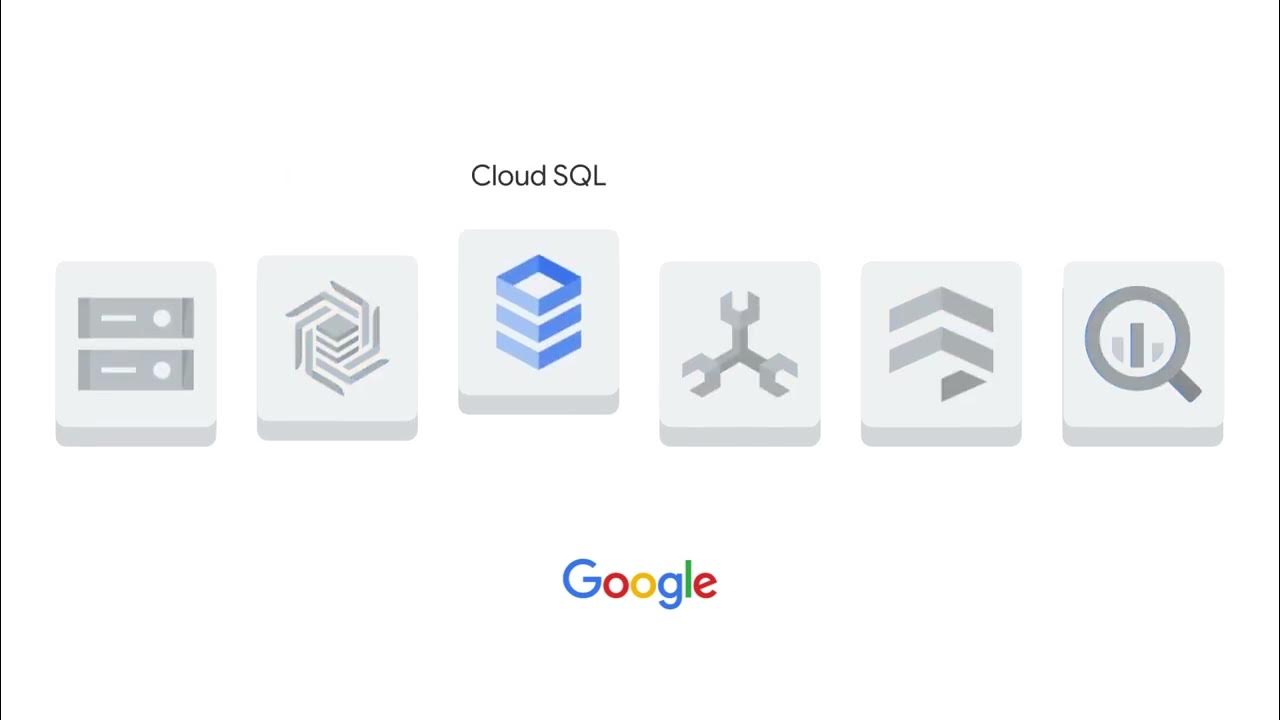Security in the cloud
Summary
TLDRThis video highlights Google Cloud's robust security infrastructure, focusing on five key protection layers: hardware infrastructure, service deployment, storage services, internet communication, and operational security. Google customizes its hardware and designs secure boot processes, ensuring data protection. The company also encrypts inter-service communication and storage, employs advanced identity management, and offers DoS protection through its Google Front End. Operational security is strengthened through intrusion detection, monitoring, and rigorous employee protocols. By integrating machine learning and Red Team exercises, Google works to maintain the highest security standards for its users.
Takeaways
- 😀 Google prioritizes security across its infrastructure, ensuring the safety of data for its vast user base.
- 😀 Hardware design and provenance are key components, with custom-built servers and networking equipment ensuring physical security.
- 😀 Google utilizes secure boot stacks to verify the integrity of its software, employing cryptographic signatures over key system components.
- 😀 Google data centers are designed with multiple physical security layers, and access is highly restricted to ensure only authorized personnel can enter.
- 😀 Encryption of inter-service communication is implemented, with automatic encryption for all RPC traffic between data centers.
- 😀 Google employs additional layers of encryption at rest, ensuring that physical storage, including hard drives and SSDs, is encrypted.
- 😀 The Google Front End (GFE) ensures secure TLS connections and applies best practices like perfect forward secrecy and DoS attack protections.
- 😀 Google can absorb many Denial of Service (DoS) attacks thanks to its infrastructure's scale, complemented by multi-layer protections.
- 😀 Google actively monitors and limits the activities of employees with administrative access, reducing the risk of insider threats.
- 😀 Google’s software development practices include two-party code reviews and the use of libraries to prevent certain security flaws.
- 😀 Google offers a Vulnerability Rewards Program, incentivizing the discovery and reporting of bugs in its infrastructure or applications.
Q & A
What are the five layers of protection Google provides to secure customer data?
-The five layers of protection provided by Google are: Hardware infrastructure, Service deployment, Storage services, Internet communication, and Operational security.
How does Google ensure the security of its hardware infrastructure?
-Google ensures the security of its hardware infrastructure through custom design of server boards and networking equipment, the use of a secure boot stack, and strong physical security measures in their data centers.
What role does the hardware security chip play in Google’s infrastructure?
-Google’s custom hardware security chip is deployed on both servers and peripherals to enhance the security of their infrastructure, ensuring data protection and integrity.
How does Google ensure the integrity of its server machines during boot-up?
-Google ensures the integrity of server machines during boot-up by using cryptographic signatures over the BIOS, bootloader, kernel, and base operating system image.
What measures does Google take to ensure physical security in its data centers?
-Google designs and builds its own data centers with multiple physical security layers. Access is restricted to a small fraction of employees, and for third-party data centers, Google imposes additional Google-controlled security measures.
How does Google handle inter-service communication security?
-Google encrypts all inter-service communication using RPC (Remote Procedure Calls) with cryptographic privacy and integrity. This encryption extends to all infrastructure RPC traffic, even inside Google data centers, using hardware cryptographic accelerators.
How does Google handle user identity and authentication?
-Google’s identity service goes beyond just usernames and passwords by intelligently challenging users based on risk factors, and users can also employ secondary authentication factors like U2F-compatible devices.
What is Google’s approach to encryption at rest in storage services?
-Google applies encryption at rest to most applications accessing physical storage, using centrally managed keys. Additionally, hardware encryption support is enabled in hard drives and SSDs to further enhance security.
What is the Google Front End (GFE) and how does it protect internet communication?
-The Google Front End (GFE) ensures secure internet connections by terminating TLS connections with a public-private key pair and an X.509 certificate from a certified authority, supporting perfect forward secrecy, and protecting against Denial of Service (DoS) attacks.
How does Google defend against Denial of Service (DoS) attacks?
-Google's massive infrastructure allows it to absorb many DoS attacks. It also employs multi-tier, multi-layer protections to minimize the impact of any DoS on services running behind the Google Front End.
What operational security measures does Google use to prevent insider threats?
-Google limits and actively monitors the activities of employees with administrative access, employs Red Team exercises to improve detection mechanisms, and requires employees to use U2F security keys to guard against phishing attacks.
What software development practices does Google follow to prevent security bugs?
-Google uses central source control, requires two-party code reviews, provides developers with security libraries, and runs a Vulnerability Rewards Program that rewards individuals who identify security bugs.
Outlines

このセクションは有料ユーザー限定です。 アクセスするには、アップグレードをお願いします。
今すぐアップグレードMindmap

このセクションは有料ユーザー限定です。 アクセスするには、アップグレードをお願いします。
今すぐアップグレードKeywords

このセクションは有料ユーザー限定です。 アクセスするには、アップグレードをお願いします。
今すぐアップグレードHighlights

このセクションは有料ユーザー限定です。 アクセスするには、アップグレードをお願いします。
今すぐアップグレードTranscripts

このセクションは有料ユーザー限定です。 アクセスするには、アップグレードをお願いします。
今すぐアップグレード5.0 / 5 (0 votes)






